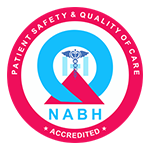We all want to live healthier lives, right? Most of us are quick to jump into fitness routines, switch to clean eating, or finally quit that 3-cups-of-coffee-before-lunch habit. And while all these lifestyle changes are important, there’s another side to the story; factors that affect our health but are completely out of our control. Yep, I’m talking about non-modifiable risk factors.
First, take a deep breath because I know this may sound like, "What now?" Before you roll your eyes, let me explain. These non-modifiable risk factors for disease can actually help you gain power over your health because when you know the issues you are up against right out of the gate, you can make more intelligent choices to protect yourself. So, let's now explain these in a simplified way.
To begin with, risk factors are characteristics that affect a person's chance of becoming ill, acquiring a disease. Some risk factors can be changed (i.e., smoking, eating foods you like, getting exercise) while others cannot. Non-modifiable risk factors can be characterized by things that you cannot change. Think of those as health-related cards that were dealt to you at the beginning of your life as a health-related vector.
These four play a big role in determining your health risks. They don't mean you will get a disease; they just raise the odds. Let's explore each one.
Aging is a beautiful, inevitable part of life. But it also comes with a few biological changes that increase the risk of disease. For instance:
It doesn’t mean your body is doomed after 40; it just means it needs a little extra TLC. Being aware of age-related risks helps you plan: regular screenings, smarter nutrition, and active living can all help you age with strength and grace.
Your biological sex also influences your risk for certain conditions. For example:
Again, it’s not about fear; it’s about facts. Knowing your gender-specific risks means you can pay attention to symptoms you might otherwise ignore.
If your parents, grandparents, or even uncles and aunts have had a certain disease, you may be more likely to develop it too. That’s the power of genetics and family history.
Let’s say your dad had high cholesterol and your mom has diabetes. That doesn't guarantee you'll develop the same issues, but it definitely nudges the odds.
This doesn’t mean you’re stuck. It just means you should be more proactive. Talk to your doctor about your family history and start preventive measures early. Think of it as knowing where the landmines are so you can safely step around them.
Ethnicity can influence disease risk because of both genetic and socio-environmental factors. For instance:
While this might sound discouraging, being aware of ethnic-specific risks gives you the chance to advocate for your health more effectively. It can influence the kind of tests you ask for, the diets you follow, and the lifestyle choices you prioritize.
You might be wondering, what’s the point in knowing all this if I can’t change it?
Here’s the thing: knowledge is power. Understanding your non-modifiable risk factors helps you:
Think of non-modifiable risk factors like the weather. You can’t change it, but you can carry an umbrella, wear sunscreen, or bring a jacket. Same with health; you can prepare and protect yourself.
Here’s the silver lining: while you can’t do anything about your age or genes, you can make choices that tip the balance in your favor. Eating healthy, managing stress, staying active, and avoiding tobacco and excess alcohol are powerful tools, possibly more powerful than you think.
It’s about working with what you’ve got and being a conscious caretaker of your body.
We don’t choose our age, family, gender, or heritage. But we do choose how we respond to that information. Understanding your non-modifiable risk factors isn’t about resigning yourself to illness; it’s about learning the rules of the game so you can play smarter.
So next time you fill out those medical forms or chat with your doctor, don’t just shrug off your family history or ignore your age bracket. Those details matter. But remember, they’re just one part of your health story, and you get to write the rest.
Stay curious, stay informed, and keep making choices that honor your well-being. Because even when some things are out of our hands, a lot still isn’t. And that’s where your power lies.
Ans.
Traits you can't change (like age or genetics), while modifiable ones can be altered (like diet or smoking).
Ans.
Risk increases with age as the body’s repair mechanisms weaken over time.
Ans.
It reflects inherited genes and shared traits that you can't change.
Ans.
Some diseases are more common in one sex due to biological and hormonal differences.
Ans.
They can increase the likelihood of certain diseases regardless of lifestyle.
Ans.
Yes, due to inherited traits and population-specific genetic patterns.
Ans.
Yes, biological sex and ethnicity are also key non-modifiable factors.
Ans.
It helps tailor screening and early interventions for high-risk individuals.

Certificate no- AH-2023-0186
JAN 05,2023-JAN 04,2026
"Ayurveda is not just a system of medicine; it's a way of life. Connect with us to embrace a lifestyle that nurtures your body, mind, and soul."
Book Consultation Now